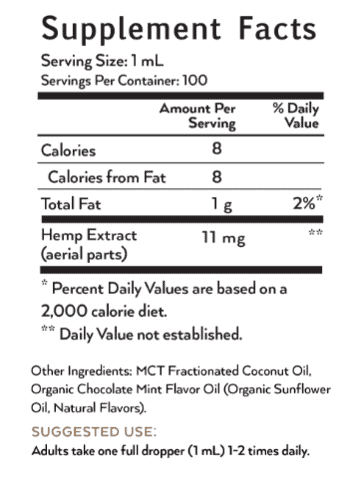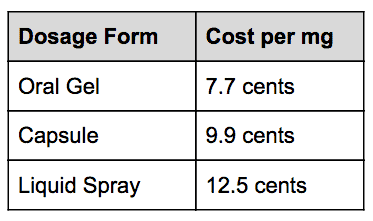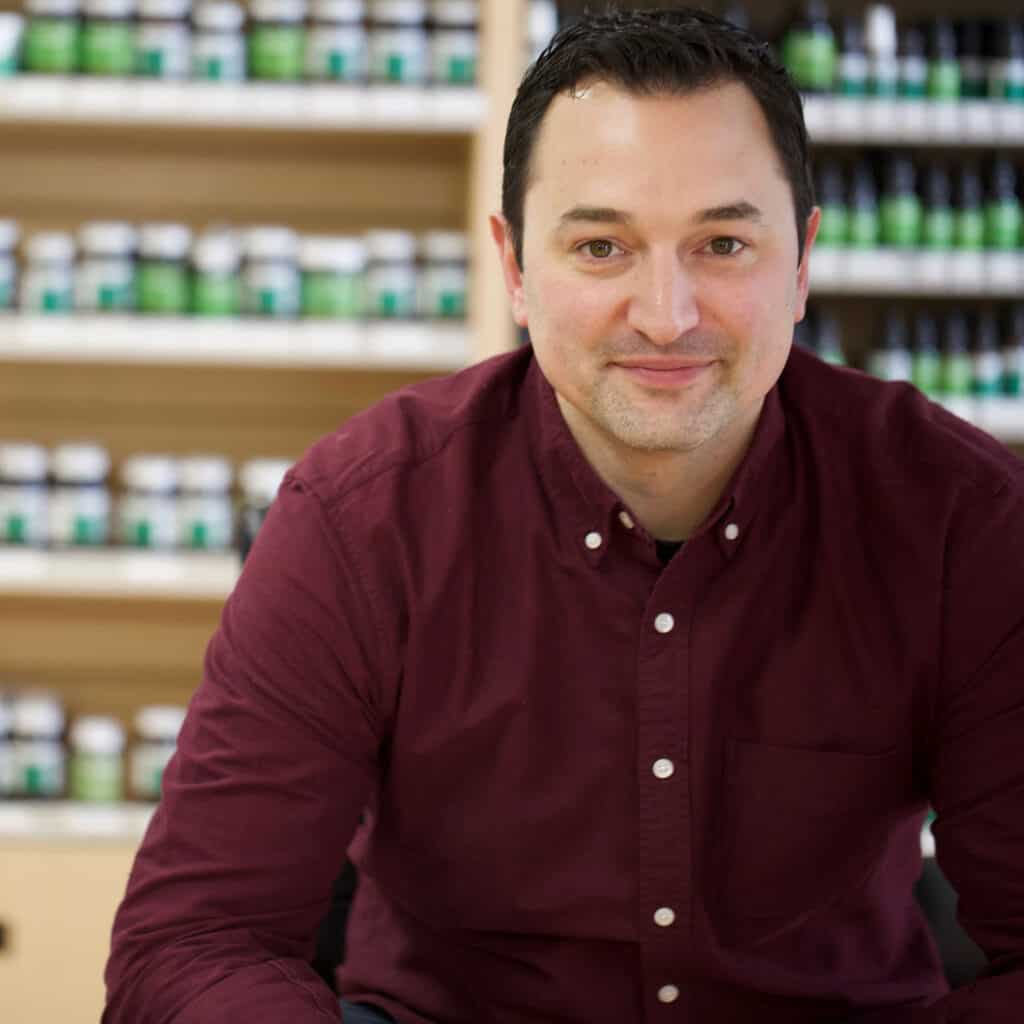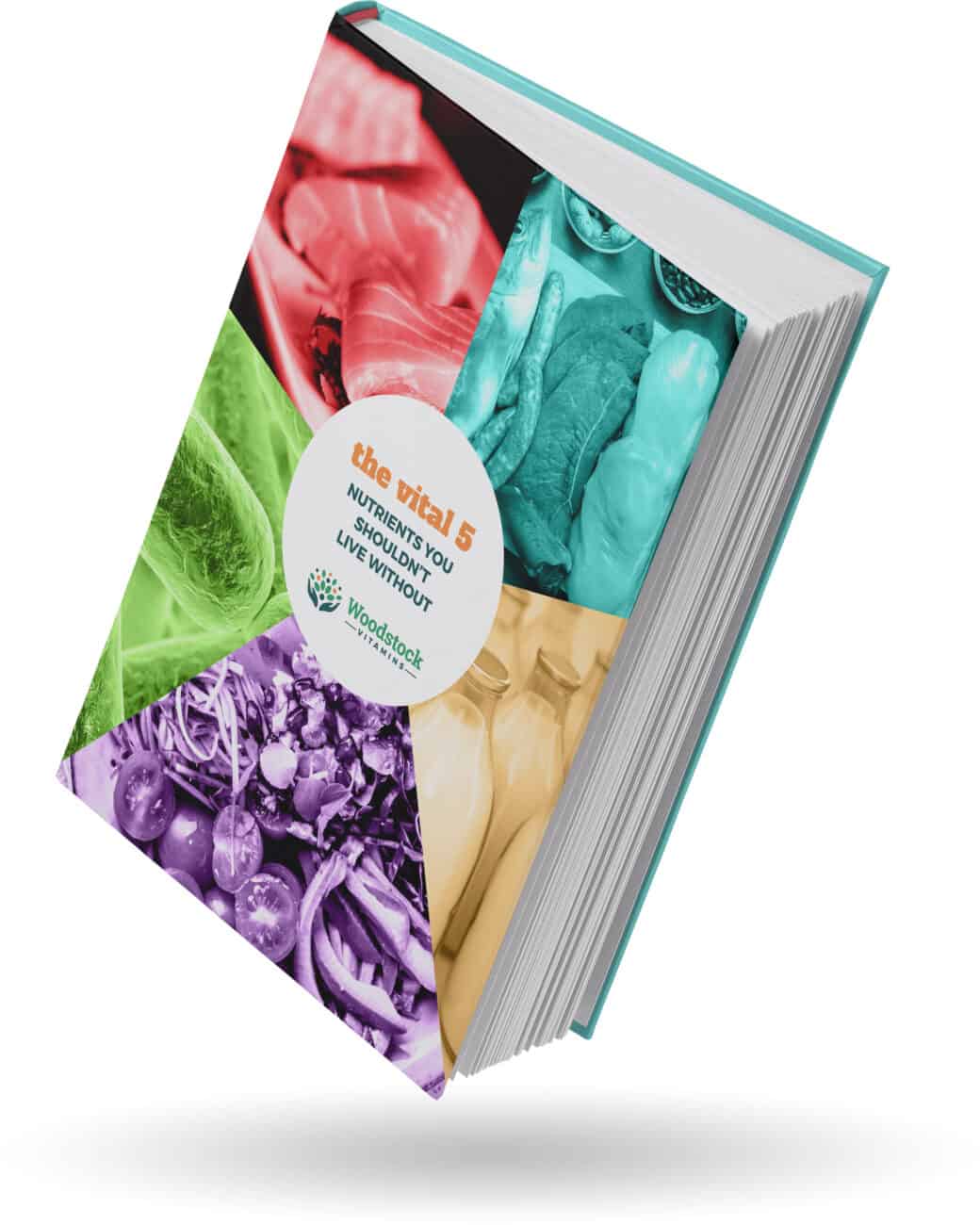I’m REALLY excited about this rant. It’s not because of all the good info that you are going to just LOVE.
It’s because I can make jokes about weed, hippies, and our hometown, Woodstock, New York.
Today we rant about the proliferation of CBD into the conversations at health food stores, pharmacies, and natural practitioners’ offices nationwide.
And we also turn our sarcasm up to a 10.
CBD oil is the newest natural product trend sweeping the country. We’ve been building to this for a while, but with a growing national acceptance of marijuana for medical and recreational use, it’s hitting a fevered pitch.
You figured all this would cause more people to chill, no? Buckle up… I’m trying out dad jokes today.
We’ll dig in rather deep here. I want to discuss some key issues beyond just defining CBD. We’ll talk dosing, price, legality, and of course, how the industry is misleading consumers, willfully or due to plain ignorance.
What is CBD? (aka Weed 101)
Like many therapeutic botanicals, pot has lots of active compounds. The most famous one, of course, is THC, but the other one you should know just as well is CBD.
Cannabidiol (canna-bi-diol), or CBD, is an active constituent found in cannabis plants. CBD is believed to have numerous opportunities for medical benefit. We are 100% on board with getting it in research labs across the country; it definitely needs more studying so we can see just how beneficial it can be.
For those of you who are unfamiliar with our green friend, I’d like to briefly discuss marijuana, or better known by the more technical term “hippy lettuce.”
Cannabis sativa is a species of plant that has over 80 active agents, called cannabinoids. THC is the [awesome one] more psychologically active of the two most famous active compounds. It is known to cause giggling, craving M&Ms, and general feelings of euphoria.
Over the years, cannabis has been bred to yield more THC than CBD – an idea probably spearheaded right here in Woodstock. Industrial hemp, on the other hand, is a strain of Cannabis sativa that is richer in CBD. It’s technically bizzaro-weed. By definition, industrial hemp has no more than 0.3% of THC on a dried basis, but is much richer in CBD.
Almost all CBD comes from industrial hemp. Industrial hemp has gained legal footing across the country in many states where it was once suppressed legally. Now, the hemp farming industry is booming, which is probably why we are seeing such a surge in CBD products.
Specially bred hemp plants can eliminate (or at least dramatically reduce) any psychological effects found in traditional cannabis.
So, from that single Cannabis sativa plant comes two major stains that have widely different impacts on the user based on the ratio of CBD to THC. Canibus indica is kind of an in-between strain or form of Cannabis with a bit more CBD than THC, but not as extreme a difference as industrial hemp.
CBD’s Effects on the Body
CBD’s effects seem to be widespread. Cannabinoid receptors are found on many cells throughout your body – the skin, digest tract, muscles, and more.
How, specifically, these things work are for another discussion (especially after it is better understood). But many of us are personally familiar with both THC and CBD to some degree or another.
To take advantage of the effects of CBD without the risks/fun of THC, CBD concentrates have been created. CBD concentrates are typically in an oil form. CBD Oil products must not contain THC. It cannot be made from the flower or leaves, just from the stalks. It can only come from industrial hemp, not Mary Jane.
The DEA is attempting to classify CBD oil as a Class I drug, like methamphetamine, LSD, and ecstasy. Seems like an appropriate classification, no?
The DEA feels that all Cannabis and their extracts or components are still considered Class I entities and are not legal for sale. A group is suing the DEA, as they feel it violates the 2014 Farm Bill. Read more on the controversy here.
Does CBD Really Work?
I will point you to a great summary of the current research on CBD. It comes from a presentation to the US Senate Caucus on International Narcotics Control. The presenter, Nora Volkow, is the director of the National Institute on Drug Abuse, a branch of the NIH. Legit stuff, coming from the people trying to eliminate drug abuse.
Essentially, she states we need more research, of course, but what data we do have is promising for epilepsy, inflammation, pain, mental health, and more.
You will never hear us say “CBD will treat/cure cancer” or any other of the outrageous claims that are made about CBD, unless proper, validated evidence exists.
We believe that CBD will be found to have positive impact on our management of many conditions, once studies can be done more regularly.
Some prescribers in our area have been using CBD for muscle spasms, pain, as an adjunct to chemotherapy or cancer management, and seizures.
A local vet also uses CBD for pain management, as an aid during cancer treatment, and for severe anxiety conditions. But, as with any supplement, CBDs are not intended to treat or cure disease.
We really need more studies and a better legal infrastructure for CBD (and pot, for that matter) so we can understand it better and use it appropriately.
For a great (legitimate) summary of what IS real about Cannabis in cancer, check here.
For me, the most positive data about Cannabis sativa is how opioid use is down in states where medical marijuana is legal.
CBD probably has a large role in that success.
An important thing to note is that the doses in many of the trials are significant – usually well over 100mg of CBD daily. The primary reason for this is CBD is very poorly absorbed, and it seems to be metabolized quickly. Since CBD is an oil, it should be in dosage forms that contain fat, sort of like Vitamin D and other fat soluble vitamins. Our favorite forms of CBD are oral gels or pastes because some medical experts recommend holding the dose in your mouth for 30-60 seconds before swallowing to try to circumvent, at least partially, the poor GI absorption.
That 100 mg number is a bit arbitrary, but important, as it is MUCH higher than what most people consume. Underdosing CBD lies at the heart of my rant against CBD, or at least CBD as most of us can access it.
CBD Dosing
We rarely can go 15 minutes without discussing fish oil, can we? Fish oil is important, man! Most people don’t get enough omega-3’s in their diets and get too many bad omega-6’s instead. Omega-3’s are great. The problem is in fish oil supplements – they are usually poorly made, contain contaminants, and the doses are way off.
The same goes for CBD. Let’s start first, with dose. When choosing a CBD product, we must ensure that we are achieving proper dosing. Look to the Supplement Facts panel and look for the actual concentration of CBD per serving. Here’s an example of a few different products from a Vitality Approved CBD brand:

As you can see, there’s a wide range here: from 15 mg CBD all the way up to 60 mg per dose.
You’ll notice two important pieces of information. The CBD dose and the Hemp Oil/Aerial Plant Parts – they are both included, and their numbers are different. As we established before, hemp contains CBD (much like how fish oil contains Omega-3s). Some hemp plants have more CBD than others. It’s important to remember the amount of hemp oil is irrelevant; hemp oil is the source, CBD is what we want.
What dose is right? Well, that’s between you and your medical professional. Know that studied doses are usually rather high compared to what most people are using. Our recommendation with CBD (and usually with any product, natural or traditional) is to start with a decent dose – think 60 mg daily. Take it consistently, and slowly titrate up to effect. This will minimize side effects and allow it to build to a point where it could actually benefit.
Unlike its THC-rich brother “Giggle Bush” aka marijuana, CBD oil is not an “as needed” product, but must be used routinely.
Paying attention to the concentration (amount per dose) of CBD is crucial because all sorts of tricks are being played on you.
Mislabelling in CBD
You know one of our main goals is to equip you with the knowledge to make the best health decisions for you. Well, here’s a doozy. Look out for this trick, shown on a label from a popular brand:

Anyone playing along at home see what’s going on here? They are not listing the amount of active CBD, just the amount of Hemp plant used.
The amount of Aerial Plant Parts itself is extremely small. To match the 250mg Aerial Plant Parts of the Vitality Approved high dose product, you would need 30 ml of this stuff, or 1 ounce. This does not even guarantee that there will be 60mg of actual CBD!
This trick is used all the time in herbal products. Grinding up an entire saw palmetto plant and putting it in a capsule is A LOT different than extracting the portions of the plant that are rich in the beneficial compounds and then concentrating those compounds. The proper species of turmeric may have turmerones in its leaves, for example, but you’d need to eat lots of plants to get the dose found in a properly made turmeric supplement.
Just like fish oil, they are misleading consumers on how much active ingredient they are getting. Who cares if you are taking 1000mg of fish oil if it only contains 200mg of EPA and DHA – the active components.
Sometimes a CBD product is labeled as “containing X mg of CBD per bottle”instead of per dose. You then have to do all sorts of math to reverse engineer the actual amount of CBD you are getting. “Why not be clear about it?” says the angry hippie looking for resolution from anxiety without worrying about failing a random drug test because society is pretty darn backwards about drug use… Because, if they were clear about it, even casual consumers would see their product for what it is – a rip off.
Beyond blatant mislabelling and misleading, we have the typical industry nonsense to contend with. The FDA tested a bunch of CBD products, and to no one’s surprise, most did not meet label claims for amounts of CBD. Some weren’t even close – off by a factor of 10 or more. And many contained THC, which, ya know, is bad.
Let’s rant about the “experts” here. Who the heck is selling this stuff without understanding the whole picture? It’s like selling non-GMO water or free-range Zinc supplements. Does anyone bother to take 3 seconds to understand what we are trying to accomplish and if the products we are using can even do that?
Costs are NOT an Indicator of Anything!
Despite being mislabelled or sub-potent, brands are not shy about charging an arm and a leg for their products.
Concentrated doses of CBD are expensive, there is no doubt about that. Price, however, is being used as a false marker of quality or potency that is definitely inappropriate. What I mean is, just because it is $80, doesn’t mean that it’s any good. In fact, the evidence shows it is probably not and you are getting ripped off.
On average, the CBD products out there are $60-100 per bottle. The amount of CBD per dose varies, as does the number of doses in a bottle. Going back to fish oil: a $20 bottle of fish oil is certainly affordable, but you may have to take 15 softgels at a time to get to a decent dose.
Krill oil is $45 a bottle, but that doesn’t mean it’s better than the $20 fish oil – in fact, it is less potent typically and has a higher risk of rancidity.
When we consider supplements from a price perspective, we must compare the cost to achieve a target dose to have a truly accurate apples-to-apples comparison, and not just focus on the cost per bottle.
If you are a consumer of CBD, look at price per milligram of CBD instead of the price per bottle or package. You can calculate that by doing two quick calculations:
1. Price per dose. Divide the bottle price by the number of doses in a bottle.
A good product might be: $199.95 for a 40 dose bottle
Price per dose = $199.95/40 or $5 per dose
2. Price per milligram CBD. Divide the Price per dose by the number of milligrams CBD per dose
A good product might be: 65mg per dose at $5 per dose.
Price per mg CBD = $5/65 = 7.7 cents per mg CBD
Looking at that example product, we can see even a big difference between the different forms it comes in:

Now let’s look at how some not-so-good brands stack up on a cost per mg CBD basis. Disclaimer: We are looking at brands that show the actual CBD amounts and we are assuming that the products meet label claims.

We have WAY more examples, but let’s keep it simple here. Lower potency CBD products cost WAY more per mg, on average 3 times more, even though they are cheaper per bottle.
To drive the point home, you are looking at between $10 and $38 per day to achieve a target dose of 100mg. Insane.
Just like fish oil, you may have an “affordable” CBD oil product, but in reality you will be spending MUCH more to get an equivalent dose. And just like fish oil, this takes into account ONLY dosing; you can have a well concentrated, but poorly made CBD.
After years of owning a community business, we grow close to many of our customers. A dear friend of ours recently succumbed to cancer. During her treatment, CBD oil was used at very high doses (over 2,000 mg a day).
A NY-legal medical marijuana dispensary sold $0.20 per mg CBD, which in her case would have been over $400 per day. By helping her navigate the confusing CBD landscape we were able to help her save $1400 over her short course of treatment.
Growin’ the Good Stuff, Man…
CBD is a botanical supplement and therefore has the same liabilities any of the other herbal or plant-based products have. This includes adulteration or contamination.
To get the CBD oil out of the stalks, it must be extracted. To get the biggest “hit” for your buck, companies use wonderful compounds such as hexane (an industrial chemical that has carcinogenic effects) or acetone (nail polish remover). Not-so-insignificant traces of these extraction agents have been found in botanical products for ages now.
We are the only store that won’t allow hexane to be used as an extraction agent by any brand we carry.
CBD should be extracted using supercritical carbon dioxide extraction.
As for processing of CBD to the final supplement form, a few manufacturers use a few extra steps to refine things down a bit (moreso than other companies). Here’s a brief rundown of some terms you may see regarding CBD, and what each means:
- Raw CBD Oil – initial extraction from the plant. Tends to be syrupy, dark, and has higher concentrations of impurities. Will have variable levels of CBD. A good first step but more needs to be done. Just because it is raw, doesn’t mean it is good.
- Decarboxylated CBD Oil – undergoes a processing step called decarboxylation which increases the concentration of CBD. Oil tends to be darker – green or black. This is good, but not all that is necessary.
- Filtered CBD Oil – removal of impurities and non-CBD stuff.
- Gold CBD Oil – CBD that has been both decarboxylated and filtered. Has a light golden color.
We look for a properly processed, pure product, so “Gold” is what we shoot for.
It’s All Wearing Off Too Quickly…
Did you read this month’s rant listening to Bob Marley? You should have, it actually all syncs up with Buffalo Soldier.
In conclusion, we have the natural product industry ruining a good thing again. CBD, one of the two most important pharmacologically active compounds found in Cannabis sativa, shows promise for medical use. From anxiety to pain, to inflammation, seizures, and more – good preliminary data is pointing to CBD as being a real asset.
But the people selling the products are not being truthful. CBD products are often mislabelled – instead of active CBD, the product shows the amount of hemp oil or hemp parts used.
Some products are contaminated with THC (which isn’t THAT big a deal, I guess – wink wink). Some products don’t even come close to meet label claims, having a fraction of the CBD it says it has.
And they’re not afraid to charge you. Despite having little active CBD, bottles can run you $40-80.
All the while, everyone is quickly becoming “experts” at CBD, touting all the magical benefits. How dare they! By using their misleading, expensive products, they cheapen CBD, which is being used as a last resort for many people with real suffering.
Ten years from now (if we are still all here) and legalization of Cannabis sativa is official, we will look back at these days and be regretful of all the wasted time. Time we could have been studying and using the cannabinoids as a legitimate, and successful treatment option.
CBD will most likely be great for many things, but it probably won’t be a miracle drug for all. For now, be aware of the curveballs. We can help people find a clean, potent, concentrated CBD oil in a form that is easy to take and use.
Despite the potential of CBD, there is one big negative to the legalization of cannabis… What will all the stoners talk about if pot is legal?
Just trying to keep it real…

Neal Smoller, PharmD
Owner, Pharmacist, Big Mouth



